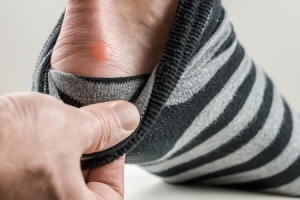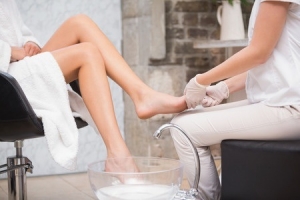Connect With Us
Blogs
Displaying items by tag: bacterial infections
Don’t Let Blisters Stop Summer Fun
Blisters are a minor foot problem that can cause a major pain and definitely put a temporary crimp in your summer activities. Blisters occur more frequently in the hot months because they are caused by the friction of your socks or shoes rubbing against your skin. Sweat increases friction and hence, more blisters. At Superior Foot & Ankle Care Center we would like to offer some tips for preventing and treating blisters:
- Keep feet dry. As soon as you notice your feet are damp, change your socks. If you tend to sweat profusely, use a foot powder. In addition to blisters, damp feet can be the perfect breeding ground for fungal and bacterial infections.
- Buy shoes that fit properly. The idea that shoes need a breaking in period is a myth. Shop for new shoes at the end of the day—that’s when feet are most swollen. Also, it’s best to not bring a brand new pair of shoes on vacation where you’ll be doing a lot of walking.
- Pack moleskin for your summer vacation. If you begin to feel a sore spot on your heel or toes, cover with a piece of mole skin and change your shoes as soon as you are able to.
- If a blister does form, do not pop it. Cover with a bandage to prevent further irritation. Your body will naturally reabsorb the fluid.
- Should a blister open on its own, wash it with soap and water only. Then apply a small amount of antibacterial ointment and cover with a bandage. Do not cut or tear the open skin. The risk of infection is greatly increased with the skin being open and exposed.
For the most part, blisters are not a medical threat unless they become infected. In that case, you will notice pus or other drainage and potentially a foul odor coming from this blister. If this occurs or the blister appears to be filled with blood, contact our Venice office at: (562) 420-9800. One of our podiatrists, Dr. Victoria Foley or Dr. Constance Ornelas will need to examine your blister and determine if an infection or other problem has developed.
Pointers for Safe Pedicures
Who doesn’t like showing off one of the season’s newest colors on their toes? Besides, getting a professional pedicure is a relaxing treat. Bacterial and fungal infections, such as athlete’s foot and fungal toenails, however, are not particularly enticing. At Superior Foot & Ankle Care Center we want our patients to be able to enjoy this pampering experience safely and so we have compiled some tips below to help prevent infections.
First, however, it’s important that you inspect your toenails and make sure that you do not currently have any problems. If you have a toenail that is discolored, thick or crumbly, do not attempt to cover it up with nail polish. These may be signs of a fungal infection that requires treatment. If the appearance of one of your nails is concerning you, contact our Long Beach office by calling: (562) 420-9800 and let our podiatrists, Dr. Victoria M. Foley or Dr. Constance Ornelas examine your toenail. Fungal infections will not go away without treatment.
If your nails are all clear and you wish to have a professional pedicure, observe the suggestions here to minimize any risk of fungal or bacterial infections:
- Bring your own nail tools and flip flops. The ideas is to not come in contact with items that have touched other people’s feet. Fungal toenail and bacterial infections are spread by direct contact.
- Look for a license. Reputable salons are licensed by the state, which means they adhere to specific health and sanitary standards. The license should be prominently displayed in the salon.
- Check out the cleanliness of your salon. Foot baths and tools should be cleaned and disinfected after each customer. Nail technicians should wash their hands before starting on a new client and the floors, work stations and rest room should all be clean.
- Refrain from shaving your legs 24 hours before getting a pedicure. Shaving creates tiny cuts in the skin which can allow bacteria to enter. For this reason, if you have any open cuts or blisters on your toes, feet or legs, you should also wait until they have healed before getting a pedicure.


